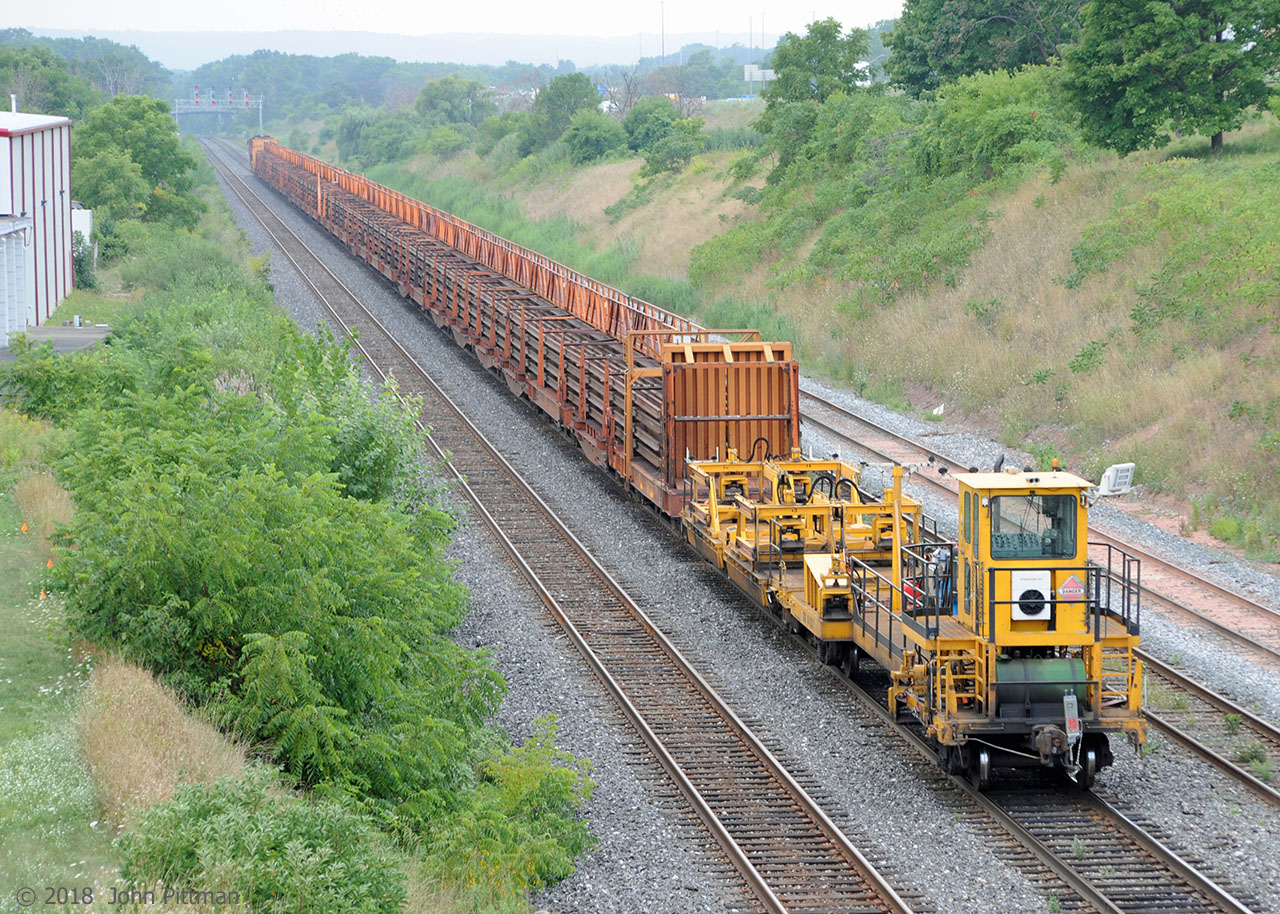
Welcome Visitor. First time here? Like what you see? Bookmark us for when you are bored, and check out 'top shots' and 'fantastic (editors choice)' in the menu above, you won't be dissapointed. Join our community!
click here to sign up for an account today. Sick of this message? Get rid of it by
logging-in here.



Some things that intrigue me about CWR trains – they go around curves and over hills and dips ok, but all those rails must make a lot more turning resistance than ordinary coupled railcars – any issues with that ? Also, are the already-long rails arc-welded together on this yellow end-car ?
CWR trains are very unique. There are speed restrictions for them if they go around curves or through turnouts. Also there are different speeds for loads and empties.
This train will need to be reconfigured as the locomotive normally has to be next to the “rail feeder” car.
The rail unloading is not controlled by anyone in the cab. The unloading is controlled by the men on the ground next to the feeder car and men half way up on the gangway that you see in the middle of the train.
All rail are already welded in 1/4 mile lengths. The rails are dropped according to specific needs for that location and if needed they cut the rails to specific lengths.
The trickiest part of unloading is when they have to “pig tail” the two 1/4 mile lengths together on the car and then get the rails through the feeder box. If they make a mistake and the rail does not line up with the box it can buckle and cause serious damage.
Thanks for the response, ngineered4u. So what is that cab for ? I see a fuel tank, an exhaust pipe and maybe hydraulic hoses on that end car. Before the rail is on the ground, do you know what makes it move backward off the rail carriers ? A 1/4 mile of rail is a lot of weight to move.
You are welcome jp4pix. I have not seen men in the cab very often. Usually a few of them ride in the cab when we are on our way to the offloading point because there is not enough room in the locomotive for the CWR crew. The cab could also be used for the loading of rails. The hydraulics move the feeder wings as they can be extended or retracted if a train is passing.
So before the unloading begins they can actually pick which length of rail they want to drop. They attach a cable from the feeder car to the rail they want. That rail is then pulled into the feeder car and then to the feeder box. Workers on the ground secure a cable to the track that the locomotive is sitting on to form an “anchor” that stays in place. That cable is now attached to the rail that is to be dropped. The foreman on the ground or brakeman instructs the engineer to move the locomotive forward very slowly until the “slack” is taken up and the rail starts to move through the feeder box and on to the roadbed. Once the rail has about 6 ft on the ground, the engineer can now move at about 6-7 miles and hr until either the 1/4 mile length is fully unloaded or until they need to “pigtail” a second rail from the train while its still on the CWR train.
ngineered4u’s explanations of the unloading of CWR has really expanded my knowledge of how it is done. It really adds a lot to the picture. Thanks again Phil
You are very welcome my friend. Happy to share my time working on the railroad with other “foamers”. Plus I get to learn a thing or two from all you guys too
There is also a front-of-train image with the engine and first few cars of CWR. http://www.railpictures.ca/?attachment_id=34428
Two days later I met up with this same train unloading rail on the west end of the Halton sub, reconfigured as engineered4u described. Car numbers of the rail feeder cars are actually CN 44308 (next to rail carriers) and CN 44307 (with cab). See http://www.railpictures.ca/?attachment_id=34464